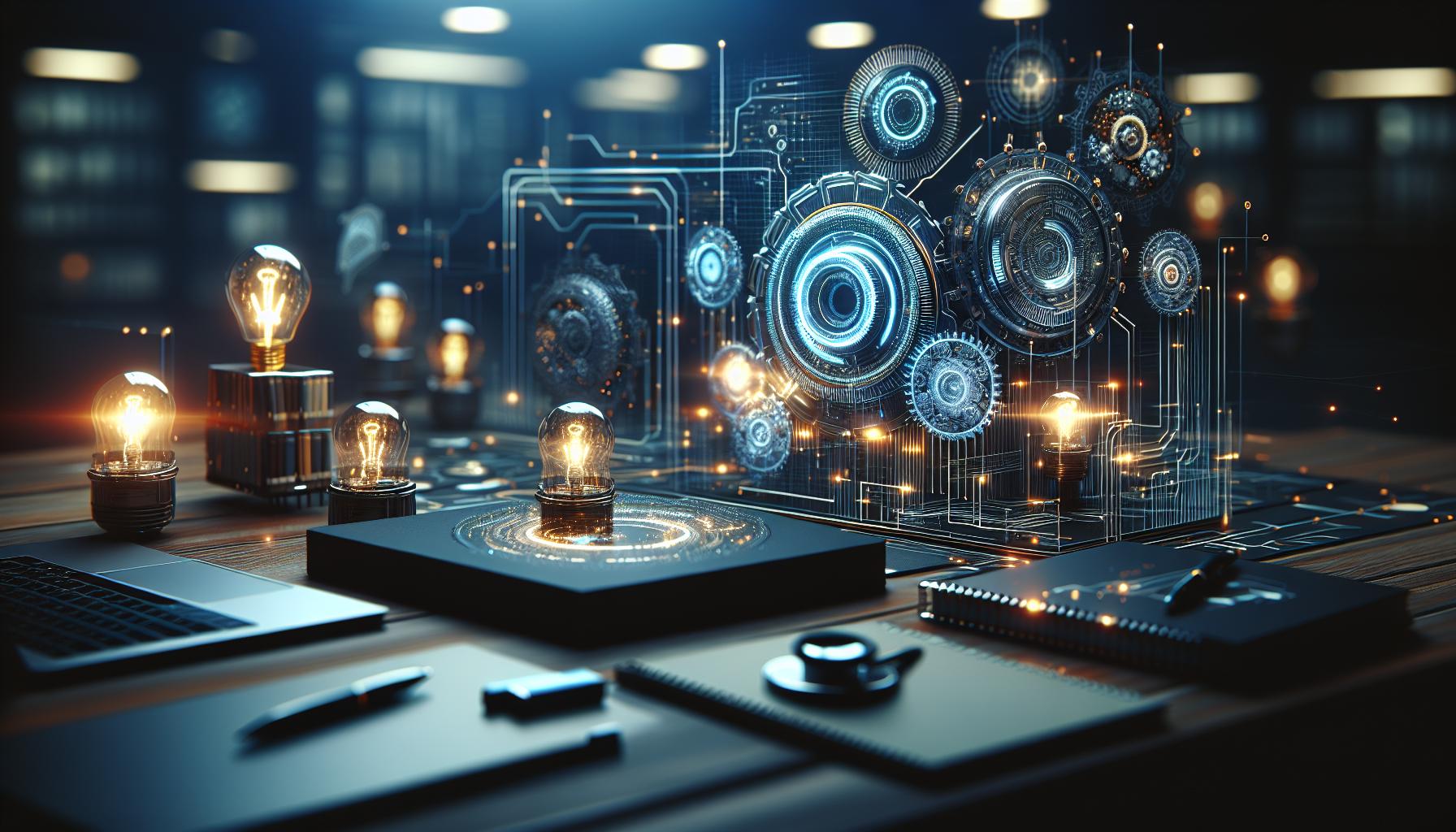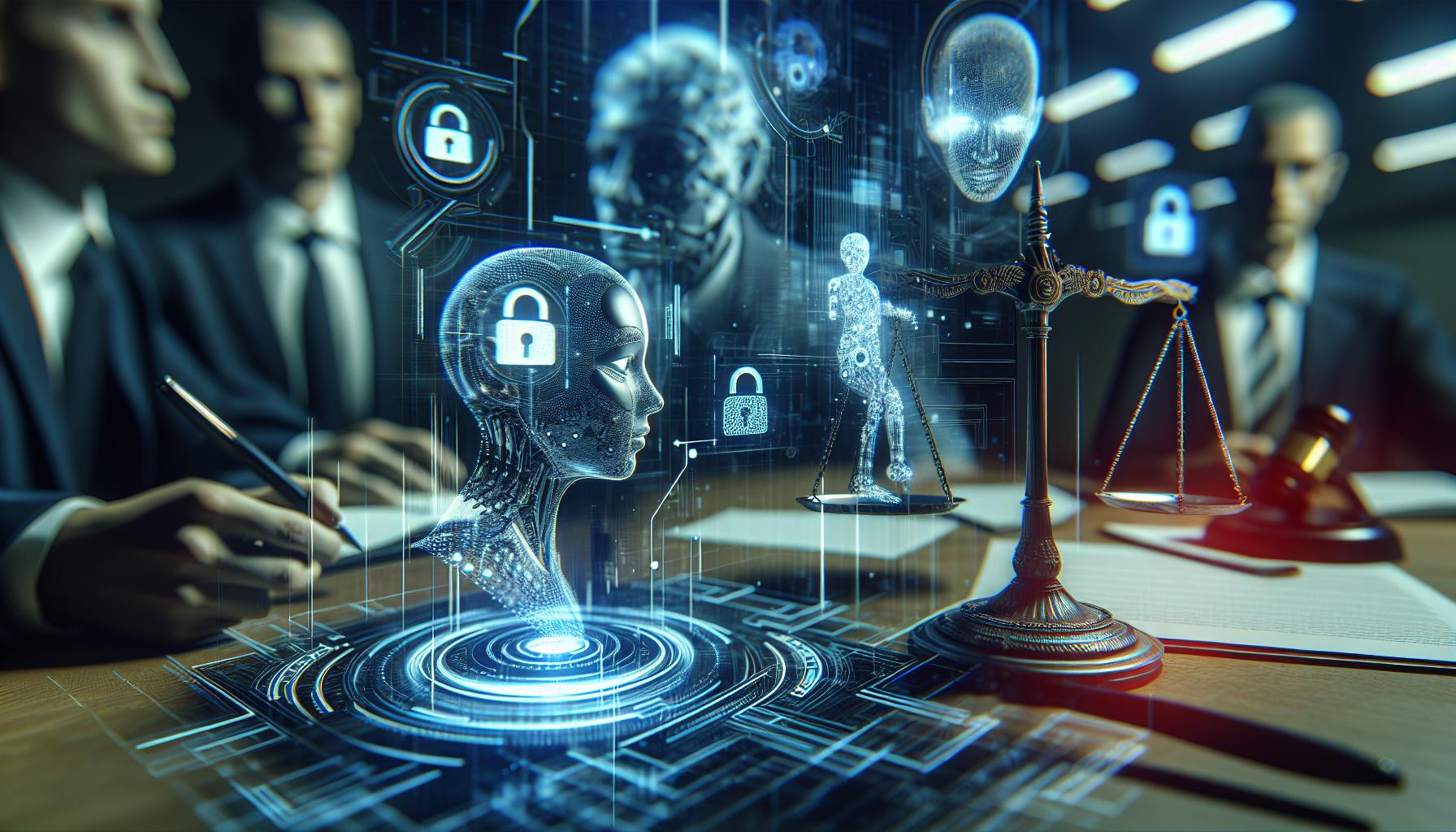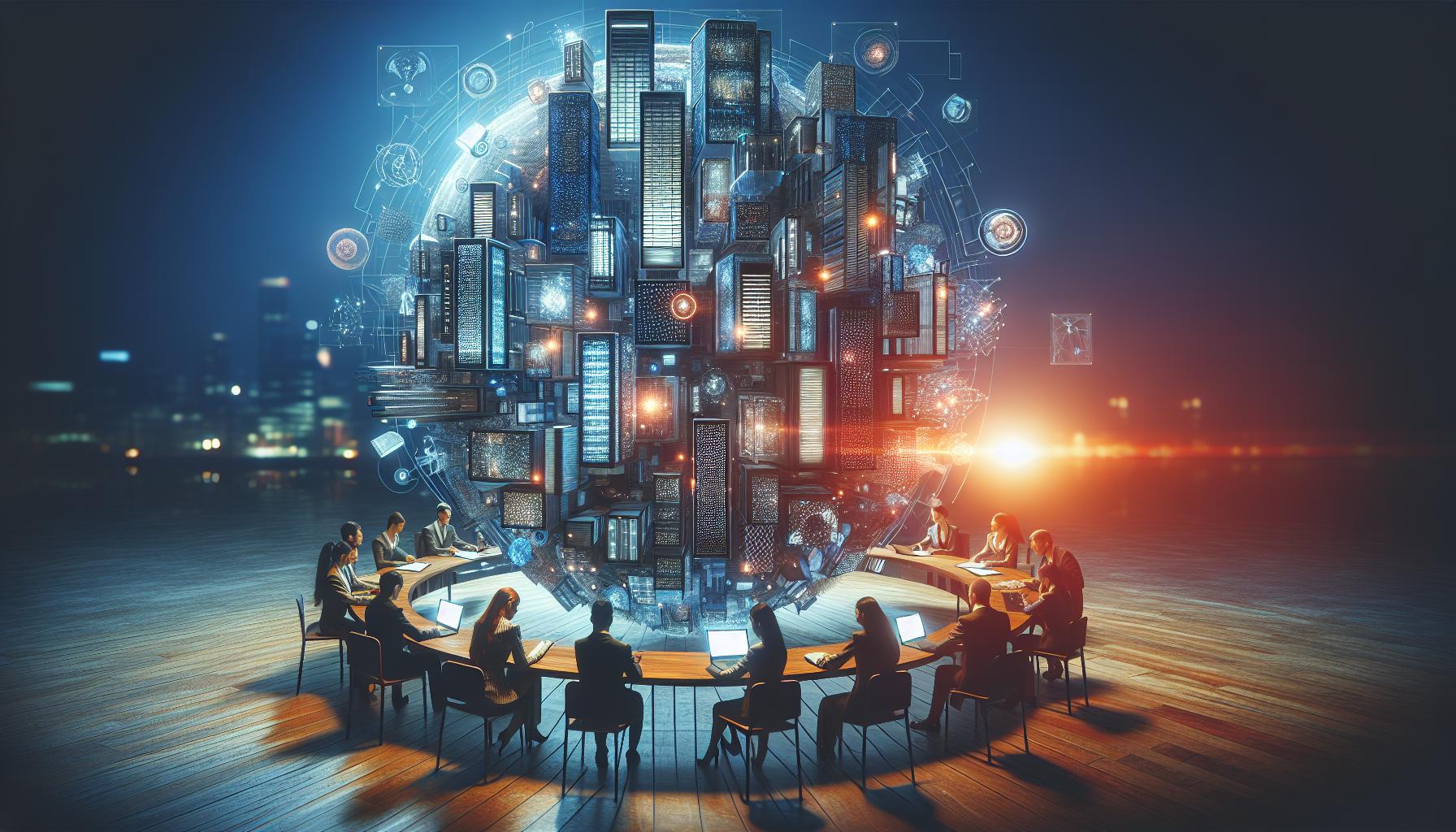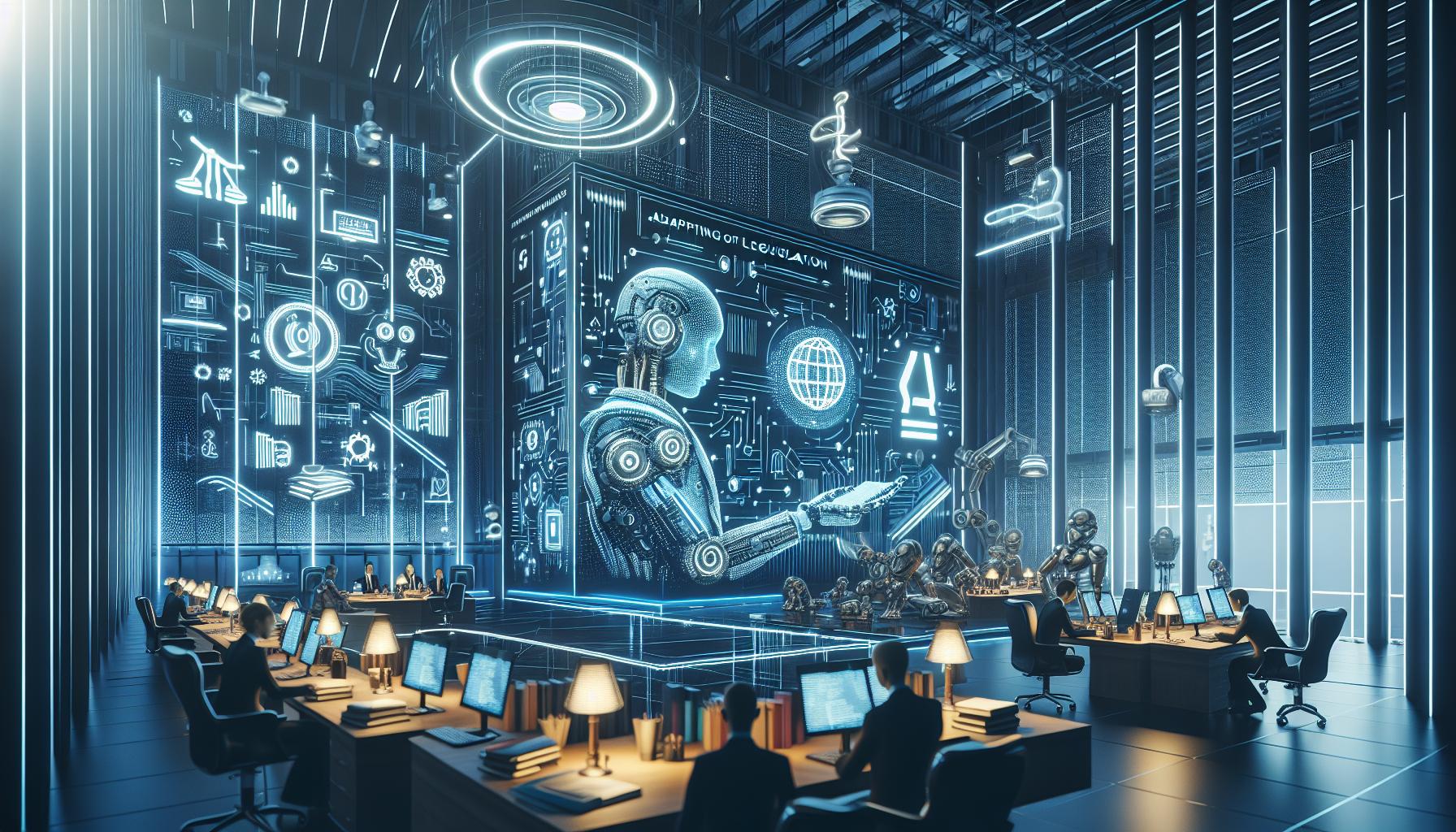As technology advances, so do the challenges surrounding digital safety adn legality. The emergence of AI-generated content raises critical questions about its implications for child exploitation laws.Understanding the legal status of AI-generated material resembling child pornography is essential in protecting vulnerable populations and ensuring accountability in an increasingly complex digital landscape.
Understanding AI-Generated Content: A Primer on Legality
Exploring the Legal landscape of AI-Generated Content
In today’s rapidly evolving digital environment, the emergence of AI-generated content raises critical legal questions, particularly concerning sensitive topics like child pornography. The legal implications surrounding AI-generated child pornography are complex and reflect broader concerns about the boundaries of technology and morality. Understanding the nuances is vital for stakeholders—from developers and users to legal professionals—who must navigate this precarious landscape.AI-generated content can sometimes blur the lines of legality due to its very nature of creation, which can involve the production of images or videos that do not depict real individuals but may still evoke notable ethical and legal dilemmas.For instance, the legality of AI-generated child pornography hinges on various factors, including intent, context, and the potential for harm. Many jurisdictions classify any creation that resembles child abuse imagery as illegal, regardless of whether real children were involved. As AI capabilities advance, producing hyper-realistic representations raises alarms about the risk they pose in enabling or perpetuating unacceptable behaviors.
Key Legal Considerations
- Data protection and Privacy: Laws like GDPR impose strict regulations on personal data use, which can extend to AI systems that learn from such data.
- Intellectual Property Rights: Ownership issues may arise regarding the original datasets used to train AI models and the outputs they produce.
- Liability and accountability: Determining who is liable when AI-generated content is misused remains a gray area, prompting discussions about developer, user, and platform responsibilities.
As stakeholders engage with these pressing legal questions, it becomes increasingly vital to foster a deeper understanding of the implications of AI advancement and deployment in sensitive contexts. Real-world cases involving the prosecution of individuals for the possession or distribution of AI-generated child pornography serve as stark reminders of the potential dangers. To navigate these turbulent waters, it is advisable for creators and users alike to consult legal experts when venturing into content that straddles ethical and legal boundaries.
The Distinction Between Real and AI-Generated Pornography
The legal Landscape of AI-Generated Material: A Closer Look
In the rapidly evolving world of technology, the emergence of AI-generated pornography raises significant legal questions, particularly concerning its distinction from conventional, real-life pornographic content.while both forms may serve similar consumer interests, the legal ramifications diverge drastically, especially when it involves child sexual abuse material (CSAM). Understanding these differences is crucial for both creators and consumers, as the law increasingly adapts to these new technologies.When discussing the legality of AI-generated child pornography, it is indeed essential to note that such images fall under the same legal frameworks as real child pornography. In many jurisdictions, federal laws explicitly classify AI-generated images that depict minors in sexual scenarios as illegal. this classification extends beyond mere visual creation—as these images can potentially harm the dignity and rights of real children, they are treated with a zero-tolerance policy under current law. In this very way, engaging with or distributing AI-generated child pornography is a serious crime, punishable by severe penalties.
Legal Definitions and Implications
The fundamental distinction between real and AI-generated pornography often blurs when it comes to legal definitions. Notably, AI-generated child pornography is viewed as a form of CSAM, leading to a uniform approach in criminalization across various states. In fact, many states have amended their laws recently to include provisions specifically targeting AI-generated content. This ensures that even materials created without human involvement are subject to strict legal scrutiny.
- Real Child Pornography: Involves actual minors and inherently constitutes a crime due to the abuse and exploitation of real individuals.
- AI-Generated Child Pornography: While no actual children are harmed in the creation of these materials, the potential for real-world harm and the perpetuation of harmful stereotypes remains significant.
The legal implications of these distinctions cannot be understated. Individuals involved in the creation, distribution, or possession of AI-generated child pornography may face serious consequences similar to those imposed for traditional child pornography offenses. Thus, a complete understanding of the legal landscape regarding AI-generated child pornography is essential for anyone engaging with digital content—highlighting the need for ongoing education and awareness as laws continue to adapt.
Legal Frameworks: How Laws Treat AI-generated Child Exploitation
Legal Frameworks: Navigating the Complexities of AI-Generated Child exploitation
As technology advances, so too do the means by which harmful and illegal content can be created and disseminated. One of the most pressing concerns in this arena is the rise of AI-generated child sexual abuse material (CSAM). This phenomenon challenges existing legal frameworks, forcing lawmakers and legal practitioners to grapple with questions surrounding responsibility, possession, and the ethical implications of such technologies. Currently, the legal status of AI-generated child pornography remains murky, with significant variations across jurisdictions.
In the United States, federal prosecutors are actively appealing a decision from a federal judge in Wisconsin that determined possessing AI-generated CSAM may not constitute a violation of existing laws. This case underscores the urgent need for clear legal definitions and for legislation that explicitly addresses AI-generated content, which often falls into a gray area between traditional pornography and outright child exploitation. Various states are now stepping up to fill this legislative gap by instituting their own laws criminalizing AI-generated or computer-edited CSAM. These state-level initiatives aim to ensure that technological innovation does not create loopholes that could be exploited by offenders looking to evade prosecution [[1]].
State Law Variations and Implementation
Legal responses across different states reveal a patchwork of varying approaches, each reflecting local values and priorities. As a notable example, some states have enacted stringent laws that contextually mirror those applied to traditional CSAM, while others are still in the process of developing appropriate legislative responses.An example of this disparity can be observed in how different jurisdictions classify the nuances between AI-generated content and actual child exploitation.
To provide clarity,consider the following table detailing the actions taken by select states regarding AI-generated CSAM:
| State | Legislation on AI-generated CSAM | Enforcement Status |
|---|---|---|
| California | Explicitly criminalizes AI-generated CSAM under child exploitation laws. | Active enforcement with recent prosecutions. |
| florida | Proposed legislation is under review that addresses computer-generated CSAM. | Pending legislative approval. |
| Texas | legislation enacted that categorizes AI-generated imagery as CSAM. | Law enforcement guidelines established. |
| Wisconsin | Currently under judicial review; no specific laws addressing AI-generated CSAM. | Awaiting outcome of federal appeals. |
ongoing developments in both courts and state legislatures highlight a significant push towards establishing a comprehensive legal framework addressing the implications of AI-generated child exploitation.Stakeholders must remain vigilant and engaged, advocating for clear laws that align with the technological landscape while prioritizing the protection of vulnerable individuals. This complexity not only emphasizes the legal implications surrounding AI-generated child pornography but also calls for a broader dialog on ethics, responsibility, and the future of digital content creation.
The Role of intention in Defining Legality: Exploring Mens Rea
The Importance of Intention in Legal Definitions
Understanding the concept of intention—particularly within the legal framework—is crucial when navigating the complex landscapes of crime and culpability. In discussions surrounding AI-generated child pornography, the intention behind the creation and distribution of such material plays a pivotal role in determining its legality. Traditionally, the legal principle of mens rea, or “guilty mind,” refers to the mental state accompanying a crime, underscoring the importance of intention not just in the act but also in the implications of that act’s legality.
Intention and Legal implications
As an example, if a creator or distributor does not possess the intention to harm or exploit, the legal ramifications might differ significantly compared to those cases where intent to provoke harm or exploit is evident. This differentiation is vital as the law frequently enough seeks to punish not merely the act itself but the underlying motivations that may lead to societal harm. In the case of AI-generated content, assessing whether the creator’s intentions were aligned with harmful exploitation can influence both the legal categorization of the work and the penalties involved.
- Creators’ Perspective: Those generating AI content must be vigilant. If any intention can be ascribed that suggests an understanding or endorsement of exploitation,legal consequences become much more severe.
- legal System Perspective: Prosecutors may emphasize the intent behind creation to illustrate a pattern of predatory behavior, potentially leading to higher charges.
In real-world applications, several jurisdictions are beginning to legislate explicitly against AI-generated material akin to child exploitation. This shift emphasizes that mere creation of such content—especially when linked to inequitable or exploitative intentions—can lead to serious legal consequences regardless of the technological medium employed. Thus, understanding one’s intentions, and how they relate to the questions of legality surrounding AI-generated materials, is not only crucial for compliance but also for ethical standing in today’s increasingly digitized environment.
| Factors Affecting Legal Interpretation | Examples |
|---|---|
| Intentional exploitation | Deliberately creating content to share with harmful intent |
| Lack of harmful intent | Generative content without any awareness of misuse |
| Legislative responses | New laws aimed at specifically banning AI child exploitation content |
Ethical Considerations: Balancing Innovation and Protection
Innovation in the Digital Landscape
As technology continues to evolve, the rise of Artificial Intelligence (AI) has revolutionized content creation, presenting tremendous opportunities for innovation. Though, these advancements come with profound ethical responsibilities. One of the most alarming implications of AI technology is its capability to generate malicious content,such as child pornography. This raises critical questions about legality and morality, as society grapples with how to harness the power of AI while ensuring robust protections are in place against its misuse.
Legal Frameworks and Ethical Boundaries
Understanding whether AI-generated child pornography is illegal requires navigating a complex legal landscape. Various jurisdictions have different laws surrounding the creation and distribution of sexually exploitative material involving minors. Typically, any material that depicts minors in sexual situations — even if generated artificially — is subject to severe penalties.
- Criminalization: Most countries have explicit laws against child exploitation which extend to AI-generated content.
- Liability: content creators and platforms hosting such content can be held liable, raising questions about accountability in the digital age.
- Enforcement Challenges: Identifying AI-generated content can be challenging, complicating enforcement efforts.
The Balance Between Innovation and Protection
When assessing the ethical considerations surrounding AI-generated child pornography, it is vital to strike a balance between fostering innovation and ensuring societal protection. Developers and users of AI tools must recognize their responsibility in preventing misuse. This includes implementing stringent safeguards and ethical guidelines during the design phase of AI systems to mitigate risks.
To further this balance, the following actionable steps can be taken:
| Actionable Steps | Description |
|---|---|
| Implement strict Content Filters | AI systems should include robust content moderation tools to filter out inappropriate content effectively. |
| Transparency in AI Algorithms | develop transparent AI models that allow for audits and evaluations of their decision-making processes. |
| Collaborate with Law Enforcement | Engage with regulatory bodies to ensure compliance with laws and contribute to developing better frameworks for prevention. |
By proactively addressing these ethical considerations, innovators can contribute to a safer digital environment while advancing technology that serves the greater good.
Impacts of AI Technology on Child Protection Laws
The Intersection of AI Technology and Child Protection Laws
As artificial intelligence technology advances, its implications extend deeply into various sectors, particularly in child protection laws. AI-generated content, especially in the realm of inappropriate material, poses significant legal challenges and ethical dilemmas. the emergence of AI-generated child pornography raises crucial questions: Is it illegal? How do existing laws adapt to these new forms of exploitation? countries worldwide are grappling with integrating AI implications into their legal frameworks to ensure children’s protection remains a priority.
One of the primary concerns is the rapid pace at which AI technology evolves, often outstripping legislative responses. Current laws regarding child pornography were largely developed before the rise of complex AI tools. Consequently, many legal provisions may not explicitly cover AI-generated content, leading to potential gaps in protection. As an inevitable result, law enforcement agencies and legislators are compelled to reevaluate and update laws, ensuring that they encompass all forms of child exploitation, including those created through AI technologies.
- Increased Detection Tools: AI is not only a threat but a tool for child protection. Innovations in AI algorithms are being implemented to detect and eliminate illegal content more efficiently. These technologies can analyze images and videos at speeds far exceeding human capabilities, allowing for quicker responses to potentially harmful content.
- challenges in Evidence Gathering: The use of AI in creating realistic yet artificial content complicates the legal process around evidence. Courts must determine the authenticity of AI-generated materials, posing challenges for prosecutors working to prove cases of exploitation.
- Global Harmonization of Laws: The international nature of the internet means that a child in one country could be affected by content generated in another. This reality necessitates a collaborative approach to legal frameworks, pushing for international treaties and regulations that address AI-generated child pornography and its legal implications.
To tackle the legality surrounding these emerging issues, stakeholders must focus on creating adaptive and robust legal frameworks. Practical steps may include establishing clear definitions of AI-generated content in existing child protection laws, providing law enforcement with the necessary training and resources, and promoting public awareness campaigns to educate communities about the risks and legalities associated with AI-generated imagery. Such proactive measures not only seek justice for the victims but also deter potential offenders, thereby fostering a safer environment for children in the digital age.
Global Perspectives: How Different Countries Address AI-Generated Content
The International Outlook on AI-Generated Content Legislation
In an increasingly digital world, the legal battle over AI-generated content, particularly concerning sensitive topics like child exploitation, is a pressing issue. Different countries have approached the legality of AI-generated child pornography with varied frameworks, underscoring the complexities of international law. While some nations adopt stringent measures, others struggle to define their stance and enforce relevant regulations.
- United States: In the U.S., existing laws such as the PROTECT Act explicitly criminalize any form of child pornography, including that generated through AI. This means that AI-generated content depicting minors in sexually explicit situations falls under the same legal prohibitions as real images. This approach reflects a zero-tolerance policy towards such content, emphasizing the importance of protecting minors regardless of the medium used.
- European Union: The EU has taken proactive steps, implementing the General Data Protection Regulation (GDPR) alongside the proposed AI Act. These frameworks aim to regulate AI’s use while ensuring the protection of individual rights. Member states are encouraged to adopt national regulations that align with the EU’s commitment to combatting child pornography,which includes AI-generated materials.
- Asia: countries like Japan and South Korea are also enhancing their laws, focusing on both the production and distribution of AI-generated content. Japan, as an example, has new legislation that specifically addresses the challenges posed by digital content, reflecting a growing recognition of AI’s role in exacerbating issues related to child exploitation.
- Africa: on the African continent, while many countries are still developing their legal frameworks, initiatives are emerging, particularly in South Africa, to address digital child protection through updated laws that consider the implications of AI-generated content.
Legal Definitions and Frameworks
Understanding how different jurisdictions define and address AI-generated offenses is crucial. For example, while the U.S. utilizes a clear legal definition of child pornography that extends to AI-generated content, other countries may struggle with ambiguous terms or lack the enforcement mechanisms necessary for effective regulation. The difficulty in establishing jurisdiction, especially with cross-border content, poses additional challenges in enforcing laws against AI-generated child pornography.
| country | Legal Stance | Relevant Legislation |
|---|---|---|
| United States | Strict prohibition on AI-generated child pornography. | PROTECT Act |
| European Union | comprehensive regulations under GDPR and AI Act. | GDPR, AI Act |
| Japan | Growing legislations to address digital and AI content. | Proposed New Laws |
| South Africa | Developing stricter laws regarding child protection in digital space. | Child Protection Act (Proposals) |
nations worldwide recognize the severe implications of AI-generated child pornography and are gradually aligning their laws to address this complex challenge. The disparity in regulations serves as a reminder of the ongoing need for global cooperation and uniform standards to effectively combat the exploitation of children in all forms of digital media.
The future of Legislation: Adapting Laws to AI Developments
Adapting Legislation to Evolving AI Technologies
The rapid evolution of artificial intelligence poses significant challenges for lawmakers.With the introduction of AI-created content, particularly concerning matters like child exploitation material, the necessity for robust legal frameworks is more pressing than ever. As discussions around the legal implications of AI-generated child pornography continue, it becomes essential to understand how legislation can adapt to keep pace with technological advancements.
- Legislative Awareness: Lawmakers are increasingly aware of the unique challenges posed by AI. As an example, in 2024 alone, 99 AI-related bills were enacted across 45 states, indicating a proactive approach to addressing potential threats and ethical dilemmas posed by AI technologies [[1]](https://www.multistate.ai/artificial-intelligence-ai-legislation).
- federating Standards: Despite numerous state-level initiatives, a gap remains at the federal level, where comprehensive AI regulations are still lacking. This fragmentation can lead to discrepancies in how laws are applied, especially concerning sensitive issues like AI-generated content involving minors [[2]](https://www.whitecase.com/insight-our-thinking/ai-watch-global-regulatory-tracker-united-states).
- Global Perspective: As the U.S. wrestles with its regulatory framework, looking towards international standards can provide valuable insights. countries like the EU are progressing towards unified AI legislation that directly addresses issues of morality and legality in AI-generated outputs.
Implementing Effective Safeguards
Practical measures are crucial for adapting laws to protect against the misuse of AI technologies. Hear are actionable strategies that could enhance legal frameworks in relation to the implications of AI-generated content:
| Strategy | Description |
|---|---|
| clear Definitions | Establish specific legal definitions for AI-generated content to distinguish between permissible and illegal uses, particularly in cases of exploitation. |
| Reporting Mechanisms | Develop robust reporting systems that allow victims and whistleblowers to come forward safely and confidentially. |
| collaboration with Tech Companies | Encourage partnerships between legislators and technology firms to create ethical AI guidelines and enforcement tools. |
As we consider “Is AI-Generated Child Pornography Illegal? Legal Implications,” the importance of flexible yet firm legislative responses becomes clear. Lawmakers need to act swiftly and decisively to create a legal landscape that can adapt as quickly as AI technologies evolve.addressing these legal implications proactively can not only protect vulnerable populations but also shape responsible innovation in AI.
Preventative Measures: Tools and Strategies to Combat AI Misuse
Strategies for Mitigating AI Misuse in Sensitive Contexts
The rise of AI-generated content has ushered in a new range of ethical and legal dilemmas, particularly concerning issues like the creation of illegal material, such as child pornography. As AI technologies become more sophisticated, so do the tactics employed by those looking to exploit these tools for nefarious purposes. To effectively mitigate these risks,it is indeed crucial to implement a series of preventative measures focused on monitoring,access control,and content filtration.
Access Control Measures
- Implement strict authentication processes to limit access to AI models and datasets, ensuring only authorized personnel can utilize these powerful tools.
- Use role-based access controls to tailor permissions based on specific functions, reducing the risk of misuse by restricting exposure to sensitive capabilities.
- Maintain a comprehensive audit trail to track usage and changes to AI systems, thereby enabling quicker detection of suspicious activities.
Content Filtering and AI Monitoring Techniques
The deployment of advanced content filtering algorithms can significantly reduce the likelihood of generating inappropriate or illegal visuals. Techniques such as dataset filtering and rejection sampling ensure that only ethically sourced inputs train AI systems. Regularly updating these filters with a focus on emerging threats enhances the robustness of AI applications. Furthermore,implementing real-time monitoring systems can alert stakeholders to potentially harmful outputs as they occur,facilitating rapid intervention.
| Technique | Description |
|---|---|
| Fine-Tuning | Adjusting model parameters to refine outputs and prevent generation of harmful material. |
| Content Filters | Algorithms designed to screen and block undesirable content before it is indeed released. |
| System Prompts | Guidance mechanisms to steer AI outputs towards ethical and legal compliance. |
| monitoring-Based Restrictions | Ongoing surveillance of AI outputs for illicit content, triggering alerts for review. |
Integrating these tools and strategies not only addresses the pressing question of “Is AI-Generated Child Pornography Illegal? Legal Implications” but also sets a standard for responsible AI use across various sectors. It’s essential that developers, policymakers, and users adopt a proactive approach to combatting misuse, fostering a safe and ethical environment for AI technology.
The Need for Collaboration: Legal, technological, and Ethical Stakeholders
The Imperative for Inclusive Collaboration
In the rapidly evolving landscape of artificial intelligence (AI), the rise of AI-generated content, especially concerning sensitive topics like child pornography, underscores the pressing need for collaboration among diverse stakeholders. The convergence of legal, technological, and ethical perspectives is crucial for addressing the multifaceted implications of AI-generated child pornography. As these technologies advance, they pose complex challenges that require vigilant oversight and coordinated action from all involved parties.
Legal Stakeholders
Legal frameworks are struggling to keep pace with the innovations in AI technology. Laws pertaining to child exploitation must be re-evaluated to encompass the nuances of AI-generated imagery. This necessitates collaboration among lawmakers, law enforcement agencies, and legal experts to formulate definitions and regulations that can effectively address the risks posed by AI-generated content. Establishing clear legal comprehensions can help in prosecuting offenses and safeguarding vulnerable populations.
Technological Stakeholders
Technologists also play a significant role in combatting the misuse of AI tools. Developers and AI companies must actively engage in creating systems that are not only advanced but also ethically aligned. Implementing robust monitoring systems and employing algorithms to detect and flag potentially harmful content can mitigate risks before they escalate. Collaboration with legal experts can guide the development of technology that complies with new regulations, ensuring that AI advancements do not outstrip ethical considerations.
ethical Stakeholders
Ethical considerations must remain at the forefront as innovations unfold.Advocacy groups, ethicists, and academics should join forces to examine the broader implications of AI-generated content. This includes fostering discussions about the moral responsibilities of creators and the potential for AI to perpetuate harmful stereotypes or infringe upon rights. By promoting ethical standards and transparency,these stakeholders can ensure that technological advancements enhance societal good rather than undermine it.
Fostering a Multi-Dimensional Approach
The collaboration among legal, technological, and ethical stakeholders is not merely a formality; it is an essential strategy to navigate the complexities posed by AI-generated child pornography.By fostering a multi-dimensional approach, stakeholders can create adaptive frameworks that evolve alongside technology. Practical measures, such as forming interdisciplinary task forces or creating public-private partnerships, can effectively harness collective expertise.
To summarize, addressing the legal implications surrounding AI-generated child pornography requires a proactive dialogue among stakeholders across various domains. This collaboration can facilitate the development of responsive legal structures, promote responsible technological advancements, and uphold ethical standards, ultimately creating a safer environment for all.
to conclude
As we navigate the complex intersection of artificial intelligence and legal frameworks, the question of the legality of AI-generated child pornography becomes increasingly significant. Recent legislative changes across various states have begun to address this grave issue, equating AI-generated materials with traditional forms of child sexual abuse material (CSAM) to foster stricter enforcement and protection measures. States like California have enacted laws that explicitly outlaw AI-generated child pornography as of January 1, 2025, reflecting a growing recognition of the potential harms associated with such technologies [[2]].The legal landscape is continually evolving, with most states now updating their statutes to include provisions against computer-edited and AI-generated CSAM [[1]]. This reinforces the need for creators and distributors of digital content to understand the substantial legal risks involved. Engaging with this topic is crucial not only for legal professionals but also for technologists, ethicists, and the general public who wish to comprehend the broader implications of AI’s capabilities in society.
As we keep pace with these developments, it is indeed essential to consider not only the legal ramifications but also the ethical dimensions of AI technologies. The balance between innovation and responsible use remains paramount. We invite you to explore these complex issues further,examining the evolving legal frameworks,ethical considerations,and the potential societal impacts of AI-generated content. By delving deeper into this discourse, we can collectively shape a future that harnesses AI’s capabilities while safeguarding against its potential for misuse.












